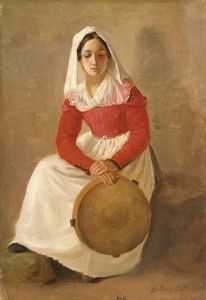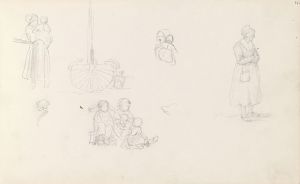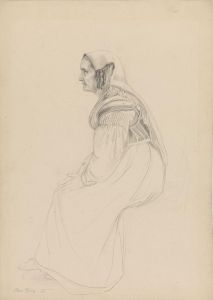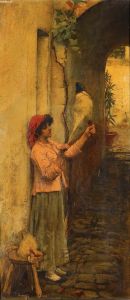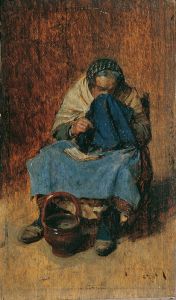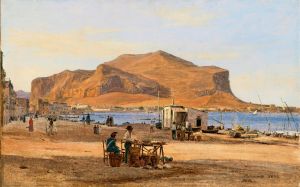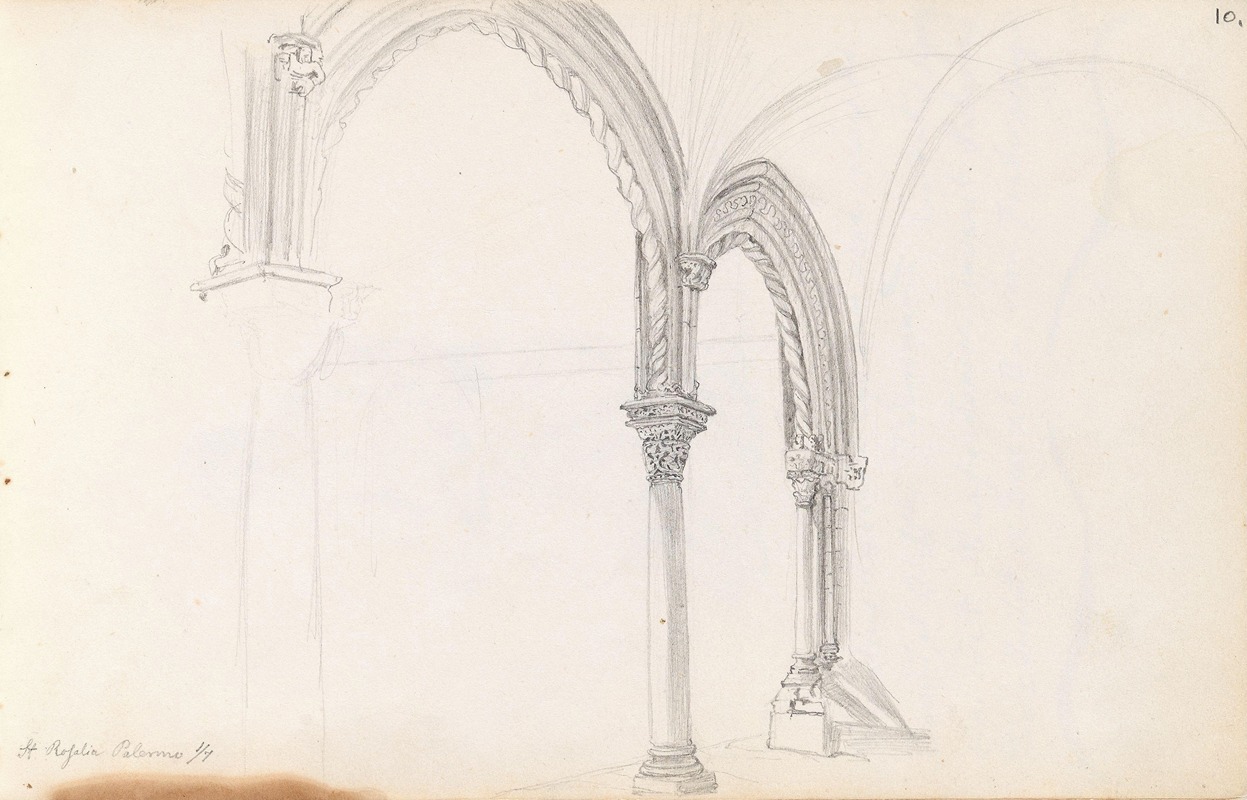
Fra Santa Rosalia, Palermo
A hand-painted replica of Adolph Tidemand’s masterpiece Fra Santa Rosalia, Palermo, meticulously crafted by professional artists to capture the true essence of the original. Each piece is created with museum-quality canvas and rare mineral pigments, carefully painted by experienced artists with delicate brushstrokes and rich, layered colors to perfectly recreate the texture of the original artwork. Unlike machine-printed reproductions, this hand-painted version brings the painting to life, infused with the artist’s emotions and skill in every stroke. Whether for personal collection or home decoration, it instantly elevates the artistic atmosphere of any space.
"Fra Santa Rosalia, Palermo" is a painting by the Norwegian artist Adolph Tidemand, created in 1850. Adolph Tidemand (1814-1876) was a prominent figure in Norwegian art, known for his detailed and realistic depictions of Norwegian folk life and historical scenes. His works often reflect a deep interest in the cultural and social aspects of 19th-century Norway.
The painting "Fra Santa Rosalia, Palermo" translates to "From Santa Rosalia, Palermo" in English. It captures a scene from the city of Palermo, located on the island of Sicily in Italy. The title references Santa Rosalia, the patron saint of Palermo, who is venerated for her miraculous intervention during the plague in 1624. The painting likely depicts a moment or a scene associated with the saint or the city’s cultural and religious life.
Tidemand's visit to Italy, including Palermo, was part of his broader European travels, which were common among artists of his time seeking inspiration and education. These travels allowed him to study the works of the Old Masters and to immerse himself in different cultural environments, which influenced his artistic style and subject matter.
In "Fra Santa Rosalia, Palermo," Tidemand employs his characteristic attention to detail and realism. The painting is noted for its vivid portrayal of the local architecture, people, and atmosphere of Palermo. The composition and use of light reflect Tidemand's skill in capturing the essence of the scene, providing viewers with a glimpse into the life and environment of the city during the mid-19th century.
The painting is part of Tidemand's broader body of work that includes other notable pieces such as "Haugianerne" (The Haugeans) and "Bridal Procession on the Hardangerfjord," which similarly showcase his ability to depict cultural and historical themes with great accuracy and empathy.
Adolph Tidemand's contributions to art were significant in the context of Norwegian national romanticism, a movement that sought to express national identity through art, literature, and music. His works remain highly regarded for their historical and cultural value, providing insight into the lives and traditions of the people he depicted.
"Fra Santa Rosalia, Palermo" is an example of Tidemand's international influence and his ability to capture the spirit of different locales with the same depth and authenticity that characterized his Norwegian subjects. The painting is housed in the National Museum of Art, Architecture and Design in Oslo, Norway, where it continues to be appreciated by art enthusiasts and scholars alike.
In summary, "Fra Santa Rosalia, Palermo" by Adolph Tidemand is a significant work that reflects the artist's skill in portraying cultural and historical scenes with realism and detail. It stands as a testament to Tidemand's artistic legacy and his contribution to the understanding of 19th-century life in both Norway and abroad.







